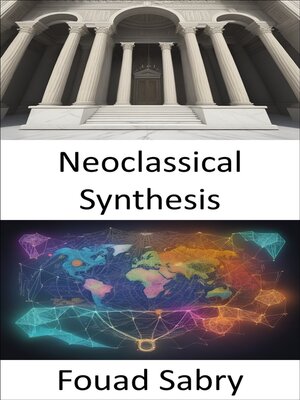Neoclassical Synthesis
ebook ∣ Unifying Economics, The Neoclassical Synthesis Demystified · Economic Science
By Fouad Sabry

Sign up to save your library
With an OverDrive account, you can save your favorite libraries for at-a-glance information about availability. Find out more about OverDrive accounts.
Find this title in Libby, the library reading app by OverDrive.



Search for a digital library with this title
Title found at these libraries:
| Library Name | Distance |
|---|---|
| Loading... |
What is Neoclassical Synthesis
The neoclassical synthesis (NCS), Neoclassical-Keynesian Synthesis, or just neo-Keynesianism was a neoclassical economics academic movement and paradigm in economics that worked towards reconciling the macroeconomic thought of John Maynard Keynes in his book The General Theory of Employment, Interest and Money (1936). It was formulated most notably by John Hicks (1937), Franco Modigliani (1944), and Paul Samuelson (1948), who dominated economics in the post-war period and formed the mainstream of macroeconomic thought in the 1950s, 60s, and 70s.
How you will benefit
(I) Insights, and validations about the following topics:
Chapter 1: Neoclassical synthesis
Chapter 2: Keynesian economics
Chapter 3: Macroeconomics
Chapter 4: Post-Keynesian economics
Chapter 5: IS-LM model
Chapter 6: Full employment
Chapter 7: New Keynesian economics
Chapter 8: Index of economics articles
Chapter 9: John Hicks
Chapter 10: Classical economics
Chapter 11: The General Theory of Employment, Interest and Money
Chapter 12: Edmund Phelps
Chapter 13: Alvin Hansen
Chapter 14: New classical macroeconomics
Chapter 15: Paul Davidson (economist)
Chapter 16: Paul Samuelson
Chapter 17: Keynesian Revolution
Chapter 18: History of macroeconomic thought
Chapter 19: Disequilibrium macroeconomics
Chapter 20: Mr. Keynes and the "Classics"
Chapter 21: Marxism and Keynesian economics
(II) Answering the public top questions about neoclassical synthesis.
(III) Real world examples for the usage of neoclassical synthesis in many fields.
Who this book is for
Professionals, undergraduate and graduate students, enthusiasts, hobbyists, and those who want to go beyond basic knowledge or information for any kind of Neoclassical Synthesis.







